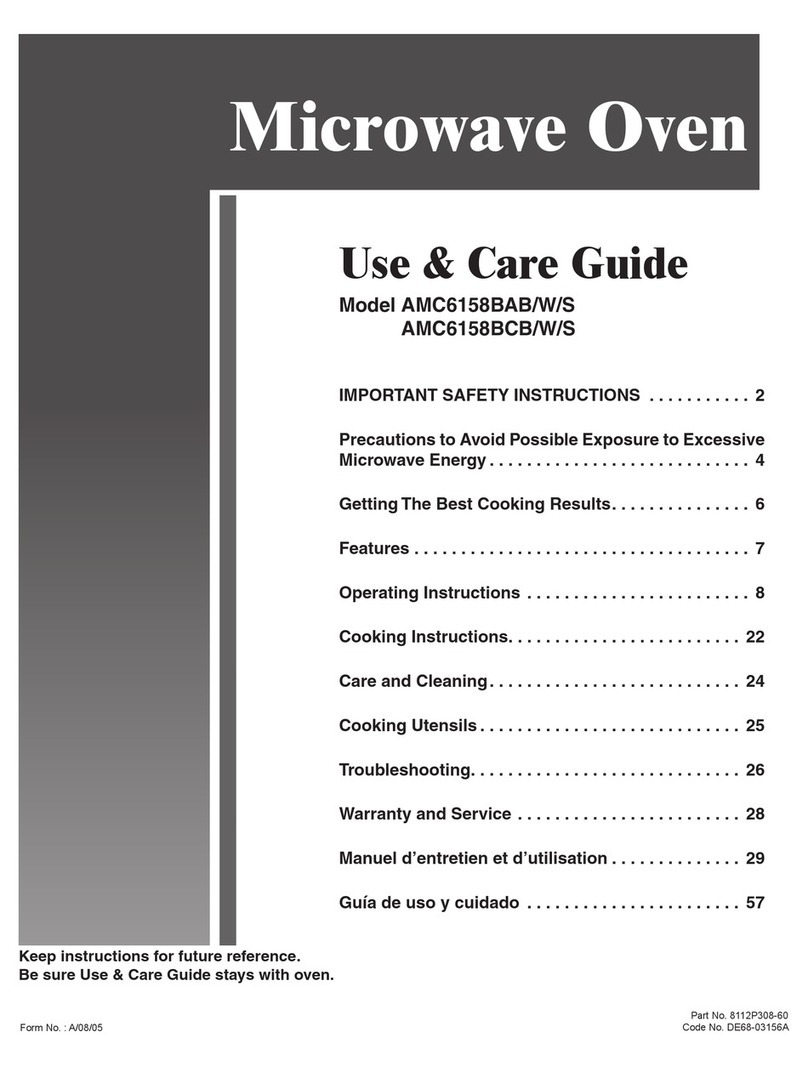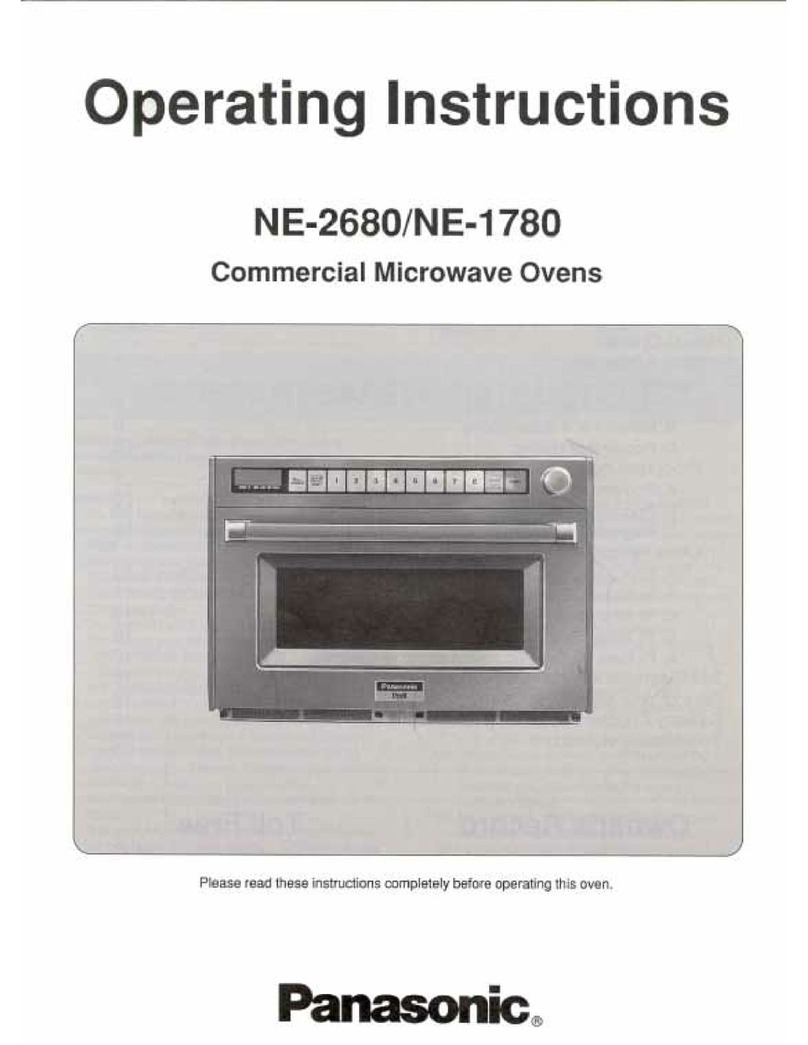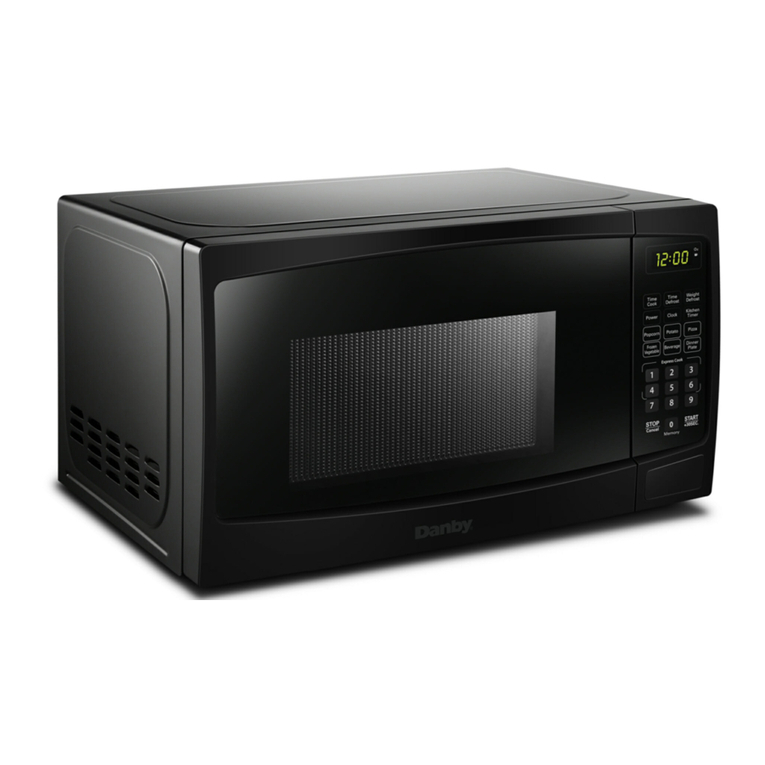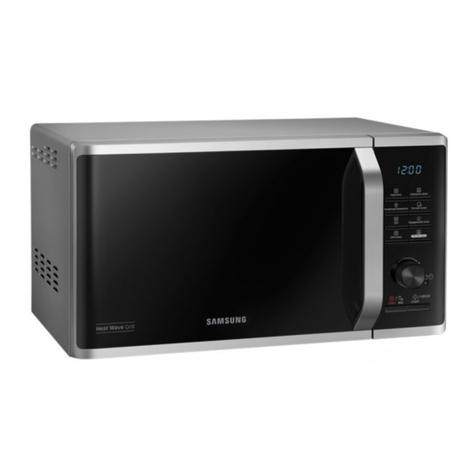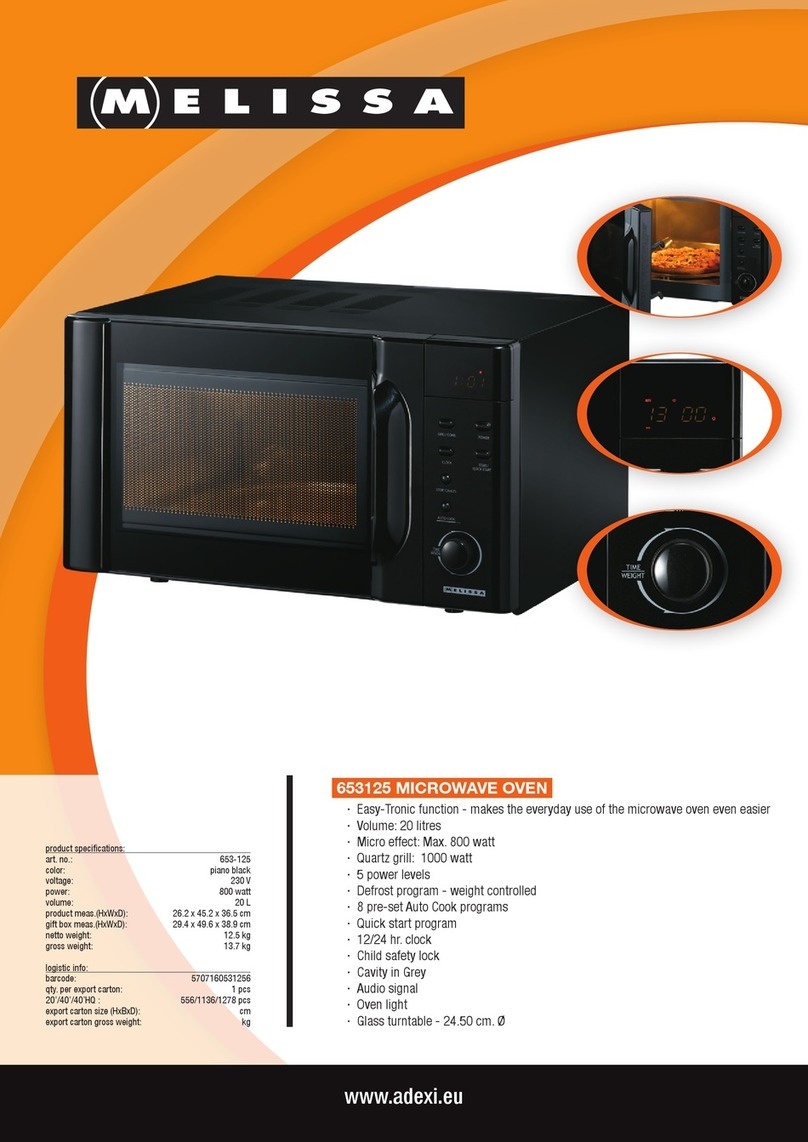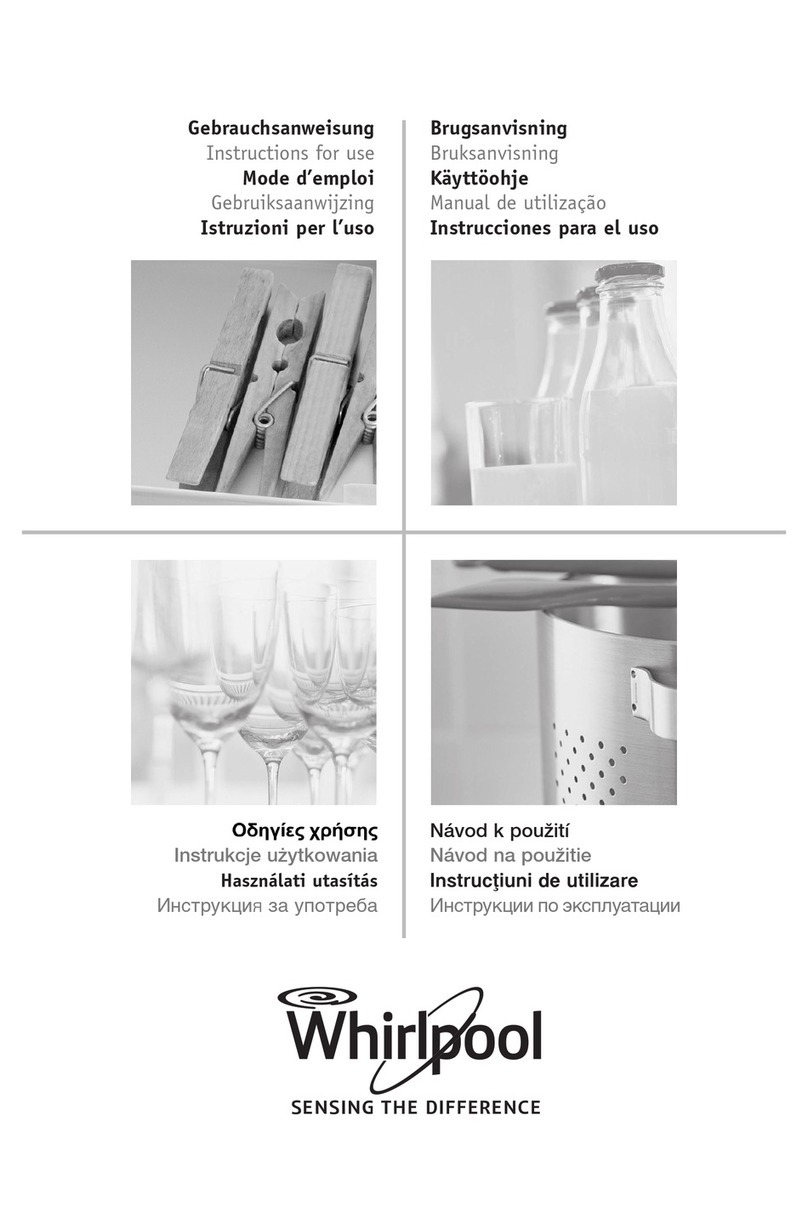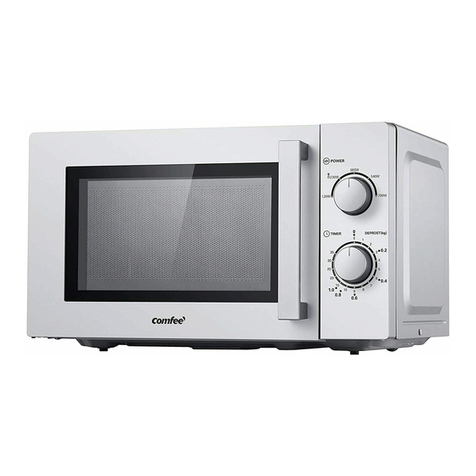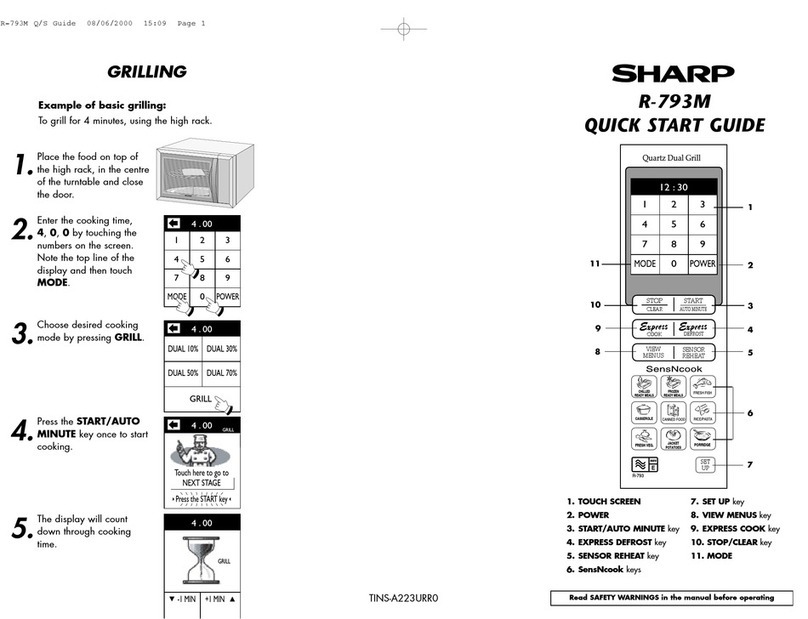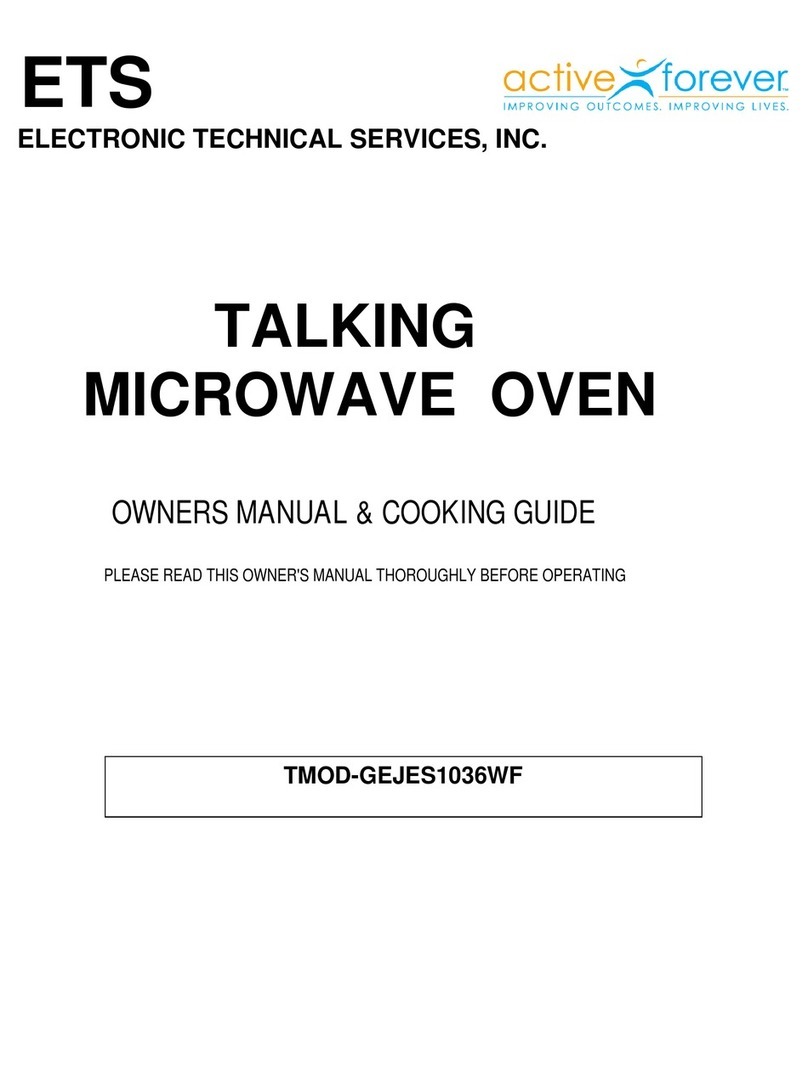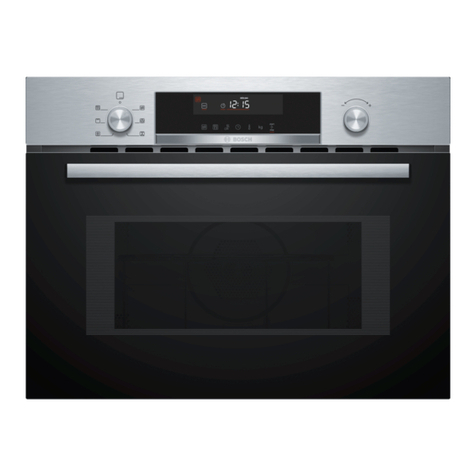Tiffany MW20M User manual

20L Manual Microwave
User Manual
Model Number: MW20M
IMPORTANT SAFETY INSTRUCTIONS
READ CAREFULLY AND KEEP FOR FUTURE REFERENCE

Please read and follow the instructions in this user manual even if you feel you are
familiar with the product, and find a place to keep it handy for future reference.
For your convenience record the complete model number (located on the product
identification plate) and the date you received the product, together with your
purchase receipt and attach to the warranty and service information. Retain in the
event that warranty service is required.
NOTE: The rating of this product (as marked on the product identification plate) is
based on specific loading tests. Normal use or the use of other recommended
attachments may draw significantly less power.
PRECAUTIONS TO AVOID POSSIBLE EXPOSURE TO
EXCESSIVE MICROWAVE ENERGY
Failure to observe the following safety precautions may result in harmful exposure to
microwave energy.
1. DO NOT attempt to operate this oven with the door open or to tamper with the
safety interlocks or to insert anything into the safety interlock holes.
2. DO NOT place any object between the oven front face and the door or allow food or
cleaner residues to accumulate on sealing surfaces. Ensure that the door and sealing
surfaces are kept clean, by wiping after use.
3. DO NOT operate the oven if it is damaged. It is particularly important that the oven
door closes properly and that there is no damage to the:
a. Door (bent)
b. Door hinges and latches (broken or loose)
c. Door seals and sealing surfaces.
4. The oven should not be adjusted or repaired by anyone other than a properly
qualified service microwave service technician.
IMPORTANT SAFEGUARDS
When using any electrically powered product, basic safety precautions should always be
followed, including the following:
PLEASE READ ALL INSTRUCTIONS CAREFULLY BEFORE USING THIS PRODUCT
WARNING: To reduce the risk of burns, electric shock, fire, injury to persons or exposure to
excessive microwave energy:
Read all instructions before using the appliance.
Use this appliance only for its intended use as described in this manual. Do not
use corrosive chemicals or vapors in this appliance. This type of oven is

specifically designed to heat & cook food. It is not designed for industrial or
laboratory use.
Do not operate the oven when empty.
Do not operate this appliance if it has a damaged cord or plug, if it is not working
properly or if it has been damaged or dropped. If the supply cord is damaged, it
must be replaced by the manufacturer or its service agent or a similarly qualified
person in order to avoid a hazard.
WARNING: Do not allow children to use the oven without supervision.
WARNING: It is hazardous for anyone other than a trained person to carry out any
service or repair operation which involves the removal of any cover which gives
protection against exposure to microwave energy.
To reduce the risk of fire in the oven cavity:
When heating food in a plastic or paper container, keep an eye on the oven
due to the possibility of ignition.
Remove metal twist-ties from paper or plastic bags before placing bag in
oven.
If smoke is observed, switch off or unplug the appliance and keep the door
closed in order to stifle any flames.
Do not use the cavity for storage purposes. Do not leave paper products,
cooking utensils or food in the cavity when not in use.
WARNING: Liquid or other food must not be heated in sealed containers since
they are liable to explode.
Microwave heating of beverage can result in delayed eruptive boiling; therefore
care has to be taken when handling the container.
Do not fry food in the oven. Hot oil can damage oven parts and utensils and even
result in skin burns.
Eggs in their shell and whole hard-boiled eggs should not be heated in microwave
ovens since they may explode even after microwave heating has ended.
Pierce foods with heavy skins such as potatoes, whole squashes, apples and
chestnuts before cooking.
The contents of feeding bottles and baby jars should be stirred or shaken and the
temperature should be checked before serving in order to avoid burns.
Utensils should be checked to ensure that they are suitable for use in microwave
ovens before use.
Cooking utensils may become hot because of heat transferred from the heated
food. Potholders may be needed to handle the utensil.
This product is a Group 2 Class B ISM equipment. The definition of Group 2 which
contains all ISM (Industrial, Scientific and Medical) equipment in which radio-
frequency energy is intentionally generated and/or used in the form of
electromagnetic radiation for the treatment of material, and spark erosion

equipment. For Class B equipment is equipment suitable for use in domestic
establishments and in establishments directly connected to a low voltage power
supply network which supplies buildings used for domestic purpose.
This appliance is not intended for use by persons (including children) with
reduced physical, sensory or mental capabilities, or lack of experience and
knowledge, unless they have been given supervision or instruction concerning
use of the appliance by a person responsible for their safety.
Children should be supervised to ensure that they do not play with the appliance.
The microwave oven is to be used freestanding only.
WARNING: Do not install oven over a range cook top or other heat-producing
appliance otherwise warranty will be voided.
The microwave oven shall not be placed in a cabinet.
The door or the outer surface may get hot when the appliance is operating.
The temperature of accessible surfaces may be high when the appliance is
operating.
The appliance shall be placed against a wall.
WARNING: If the door or door seals are damaged, the oven must not be operated
until it has been repaired by a qualified person
This appliance is not intended to be operated by means of an external timer or
separate remote-control system.
The microwave oven is for household use only and not for commercial use.
Never remove the distance holder in the back or on the sides, as it ensures a
minimum distance from the wall for air circulation.
Please secure the turn table before you move the appliance to avoid damages.
Caution: It is dangerous to repair or maintain the appliance by no other than a
specialist because under these circumstances the cover has to be removed which
assures protection against microwave radiation. This applies to changing the
power cord or the lighting as well.
Use gloves if you remove any heated food.
Caution: Steam will escape, when opening lids!
WARNING: The microwave oven is intended for heating, cooking, steaming &
defrosting food only. Drying of food or clothing and heating of warming pads,
slippers, sponges, damp cloth and similar may lead to risk of injury, ignition or
fire.
SAVE THESE INSTRUCTIONS

SPECIFICATIONS
Power Consumption
220-240V/50Hz, 1150W(Microwave)
Rated Microwave Power Output:
700W
Operation Frequency:
2450MHz
Outside Dimensions:
H256.5 × W451 × D345mm
Oven Cavity Dimensions:
H212 × W300 × D296mm
Oven Capacity:
20 Litres
Cooking Uniformity:
Turntable System
Net Weight:
Approx.9.8 kg
BEFORE YOU CALL FOR SERVICE
If the oven fails to operate:
1. Check to ensure that the oven is plugged in securely. If it is not, remove the plug from
the outlet, wait 10 seconds, and plug it in again securely.
2. Check for a blown circuit fuse or a tripped main circuit breaker. If these seem to be
operating properly, test the outlet with another appliance.
3. Check to ensure that the control panel is programmed correctly and the timer is set.
4. Check to ensure that the door is securely closed engaging the door safety lock system.
Otherwise, the microwave energy will not flow into the oven.
IF NONE OF THE ABOVE RECTIFIES THE SITUATION, THEN CONTACT A QUALIFIED
TECHNICIAN. DO NOT TRY TO ADJUST OR REPAIR THE OVEN YOURSELF.
INSTALLATION
Make sure that all the packing materials are removed from the inside of the door.
WARNING: Check the oven for any damage, such as misaligned or bent door, damaged
door seals and sealing surface, broken or loose door hinges and latches, oven cavity is
impacted or pressured, the power cord is loose, and dents inside the cavity or on the
door. If there is any damage, do not operate the oven and contact qualified service
personnel.
This microwave oven must be placed on a flat, stable surface to hold its weight and the
heaviest food likely to be cooked in the oven.
Microwave ovens must be placed under dry and non-corrosiveness environments. Do
not place the oven where heat, moisture, or high humidity (such as near a gas burner
or water tank) are generated, or near combustible materials.
For correct operation, the oven must have sufficient airflow. Allow 20cm of space
above the oven, 10cm at back and 5cm at both sides. The distance of the microwave to
the ground should be at least 85cm. Do not cover or block any openings on the
appliance. Do not remove feet.
Do not operate the oven without glass tray, roller support, and shaft in their proper
positions.
Make sure that the power supply cord is undamaged and does not run under the oven
or over any hot or sharp surface.

The socket must be readily accessible so that it can be easily unplugged in an
emergency. It also must ensure a good grounding in case leakage, ground loop can be
formed to avoid electric shock.
The position of the oven shall be far from the TV, Radio or antenna to avoid
disturbance, the distance at least more than 5m.
The microwave oven must not be placed in a cabinet. The microwave oven is intended
to be used freestanding.
Do not use the oven outdoors.
GROUNDING INSTRUCTIONS
This appliance must be grounded. This oven is equipped with a cord having a grounding
wire with a grounding plug. It must be plugged into a wall receptacle that is properly
installed and grounded. In the event of an electrical short circuit, grounding reduces risk of
electric shock by providing an escape wire for the electric current. It is recommended that
a separate circuit serving only the oven be provided. Using a high voltage is dangerous and
may result in a fire or other accident causing oven damage.
WARNING: Improper use of the grounding plug can result in a risk of electric shock.
Note:
If you have any questions about the grounding or electrical instructions, consult a
qualified electrician or service person.
Neither the manufacturer nor the dealer can accept any liability for damage to the
oven or personal injury resulting from failure to observe the electrical connection
procedures.
The wires in this cable main are colored in accordance with the following code:
Green and Yellow = EARTH
Blue = NEUTRAL
Brown = LIVE
RADIO INTERFERANCE
Operation of the microwave oven can cause interference to your radio, TV, or similar
equipment.
When there is interference, it may be reduced or eliminated by taking the following
measures:
Clean door and sealing surface of the oven.
Reorient the receiving antenna of radio or television.
Relocate the microwave oven with respect to the receiver.
Move the microwave oven away from the receiver.
Plug the microwave oven into a different outlet so that microwave oven and receiver
are on different branch circuits.

MICROWAVE COOKING PRINCIPLES
Arrange food carefully. Place thickest areas towards outside of dish.
Watch cooking time. Cook for the shortest amount of time indicated and add more as
needed. Food severely overcooked can smoke or ignite.
Cover foods while cooking. Covers prevent spattering and help foods to cook evenly.
Turn foods over once during microwaving to speed cooking of such foods as chicken
and hamburgers. Large items like roasts must be turned over at least once.
Rearrange foods such as meatballs halfway through cooking both from top to bottom
and from the center of the dish to the outside.
UTENSILS GUIDE
The ideal material for a microwave utensil is transparent to microwave, it allows
energy to pass through the container and heat the food.
Microwave cannot penetrate metal, so aluminum foils, metal utensils or dishes with
metallic trim should not be used.
Do not use recycled paper products when microwave cooking, as they may contain
small metal fragments which may cause sparks and/or fires.
Round /oval dishes rather than square/oblong ones are recommend, as food in
corners tends to overcook.
The list below is a general guide to help you select the correct utensils.
Material of
container
Microwave
Grill
Combination
Notes
Heat-resistant
ceramic
Yes
Yes
Yes
Never use the ceramics
which are decorated
with metal rim or glazed
Heat-resistant
plastic
Yes
No
No
Cannot be used for long
time microwave cooking
Heat-resistant
glass
Yes
Yes
Yes
Plastic film
Yes
No
No
It should not be used
when cooking meat or
chops as the over-
temperature may do
damage to the film
Grill rack
No
Yes
Yes
Metal container
No
No
No
It should not be used in
microwave oven.
Microwave cannot
penetrate through
metal.
lacquer
No
No
No
Poor heat-resistant.
Cannot be used for
High-temperature
cooking
Bamboo wood and
paper
No
No
No
Poor heat-resistant.
Cannot be used for
High-temperature
cooking

COOKING TIPS
The following factors may affect the cooking result:
Food arrangement
Place thicker areas towards outside of dish, the thinner part towards the centre and
spread it evenly. Do not overlap if possible.
Cooking time length
Start cooking with a short time setting, evaluate it after it times out and extend it
according to the actual need. Over cooking may result in smoke and burns.
Cooking food evenly
Food such as chicken, hamburger or steak should be turned once during cooking.
Depending on the type of food, if applicable, stir it from outside to centre of dish once or
twice during cooking
Allow standing time
After cooking times out, leave the food in the oven for an adequate length of time, this
allows it to complete its cooking cycle and cooling it down in a gradual manner
Whether the food is done
Color and hardness of food help to determine if it is done, these include:
Steam coming out from all parts of food, not just the edge
Joints of poultry can be moved easily
Pork or poultry shows no signs of blood
Fish is opaque and can be sliced easily with a fork
Browning dish
When using a browning dish or self-heating container, always place a heat-resistant
insulator such as a porcelain plate under it to prevent damage to the turntable and
rotating ring.
Microwave safe plastic wrap
When cooking food with high fat content, do not allow the plastic wrap come into contact
with food as it may melt
Microwave safe plastic cookware
Some microwave safe plastic cookware might not be suitable for cooking foods with high
fat and sugar content. Also, the preheating time specified in the dish instruction manual
must not be exceeded
PARTS & FEATURES

1. Door lock
Microwave oven door must be properly closed in order for it to operate
2. Viewing window
Allow user to see the cooking status
3. Rotating axis
The glass turntable sits on the axis; the motor underneath it drives the turntable to
rotate
4. Rotating ring
The glass turntable sits on its wheels; it supports the turntable and helps it to balance
when rotating
5. Turntable
The food sits on the turntable, its rotation during operation helps to cook food evenly
Place the rotating ring first
Fit the turntable onto the rotating axis and make sure that it is geared in
properly
6. Control panel
See below in details (the control panel is subject to change without prior notice)
7. Waveguide cover
Never remove the waveguide cover
The waveguide cover is inside the microwave oven, next to the wall of control panel.
OPERATION OF CONTROL PANEL
1. Timer
- The max cooking time length that can be set is 30 minutes.
- Each setting is 1 minute.
- A bell ring will be heard when the timer times out and returns
to Zero position.
2. Function/Power knob
There are 6 power levels:
The following table provides a reference defrost time length for
various foods:
HIGH
100% power output
(Quick cooking)
M.High
85% power output
(Normal cooking)
Med
66% power output
(Slow cooking)
M.Low
40% power output
(Drinks or soup)
Defrost
37% power output
(Defrost)
LOW
17% power output
(Keep warm)

OPERATION INSTRUCTIONS
1. Connect the cord.
Before connecting the cord, make sure the timer is set to “0” position.
Do not block the ventilation.
2. Place the food on the glass turntable and close the door.
Food must be contained in a utensil.
3. Select the desired power level.
4. Set the timer.
If desired time is less than 10 minutes, turn the timer knob to over 10 minutes
position and then turn back to the desired time setting.
5. Once the desired time is set, the cooking begins. If pausing in between is needed, just
open the door at any time, and close it to resume operation.
6. When it times out and cooking ends, the microwave oven produces a bell ring, the
inside lamp will also be automatically turned off.
If food is removed before time out, make sure to set back the timer to “0”
position, this avoids the microwave oven from operating in empty load.
CLEANING & CARE
1. Turn off the oven and remove the power plug from the wall socket before cleaning.
2. Keep the inside of the oven clean. When food splatters or spilled liquids adhere to oven
walls, wipe with a damp cloth. Mild detergent may be used if the oven gets very dirty.
Avoid the use of spray and other harsh cleaners as they may stain, streak or dull the door
surface.
3. The outside surfaces should be cleaned with a damp cloth. To prevent damage to the
operating parts inside the oven, water should not be allowed to seep into the ventilation
openings.
4. Wipe the door and window on both sides; the door seals and adjacent parts frequently
with a damp cloth to remove any spills or spatters. Do not use abrasive cleaner.
5. Do not allow the control panel to become wet. Clean with a soft, damp cloth. When
cleaning the control panel, leave oven door open to prevent oven from accidentally
WEIGHT RANGE
DEFROST LENGTH
Meat
0.1~1.0kg
1:30~26:00
Poultry
0.2~1.0kg
2:30~22:00
Seafood
0.1~0.9kg
1:30~14:00
WARNING: TO AVOID RISK OF INJURY AND BURNS, DO NOT TOUCH
HOT SURFACES WHEN THE OVEN IS IN USE. ALWAYS USE OVEN
MITTS.
CAUTION: ALWAYS USE EXTREME CARE WHEN REMOVING THE
BAKE TRAY, WIRE RACK OR ANY HOT CONTAINER FROM THE HOT
OVEN. ALWAYS USE THE TRAY HANDLE, OR OVEN MITTS WHEN
REMOVING HOT ITEMS FROM THE OVEN. ALWAYS PLACE THE HOT
ITEM ON A HEAT RESISTANT MAT ON A FLAT SURFACE.
WARNING: BE SURE TO UNPLUG THE UNIT AND ALLOW IT TO COOL
BEFORE CLEANING

turning on.
6. If steam accumulates inside or around the outside of the oven door, wipe with a soft
cloth. This may occur when the microwave oven is operated under high humidity
condition. And it is normal.
7. It is occasionally necessary to remove the glass tray for cleaning. Wash the tray in warm
sudsy water or in a dishwasher.
8. The roller ring and oven floor should be cleaned regularly to avoid excessive noise. Simply
wipe the bottom surface of the oven with mild detergent. The roller ring may be washed
in mild sudsy water or dishwasher. When removing the roller ring from cavity floor for
cleaning, be sure to replace in the proper position.
9. Remove odors from your oven by combining a cup of water with the juice and skin of one
lemon in a deep microwaveable bowl, microwave for 5 minutes. Wipe thoroughly and dry
with a soft cloth.
10. When it becomes necessary to replace the oven light, please consult a
serviceman/electrician to have it replaced.
11. The oven should be cleaned regularly and any food deposits removed. Failure to maintain
the oven in a clean condition could lead to deterioration of the surface that could
adversely affect the life of the appliance and possibly result in a hazardous situation.
12. Please do not dispose this appliance into the domestic rubbish bin; it should be disposed
to the particular disposal center provided by the municipalities.
CUSTOMER SERVICE
Australian Customer Service
GAF Control (Sales) Pty Ltd
P.O Box 19
Altona North, Victoria, 3025
Phone: 1300 659 489
Hours: 9am-5pm (EST) Mon-Fri
www.gafcontrol.com.au
*This product may vary slightly to the product illustrated due to ongoing product
development.
Table of contents
Other Tiffany Microwave Oven manuals


